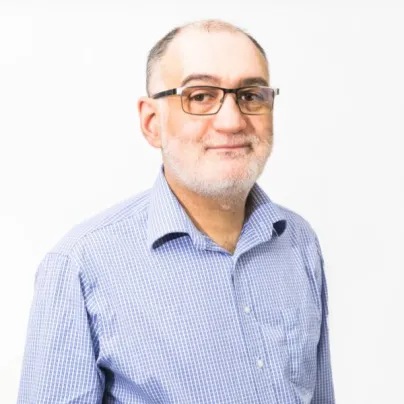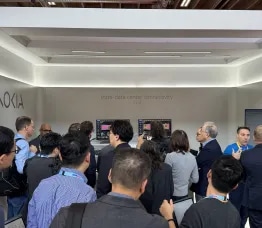Six trends driving long-haul network evolution

Long-haul traffic continues to grow as a result of increasing demand and bandwidth consumption for traditional applications such as content delivery, data replication, software as a service, router interconnect, wavelength services and other private line services. According to a recent Nokia Bell Labs report, traditional consumer and enterprise traffic is growing at a CAGR of 16%.
But the same report also says artificial intelligence (AI)-related traffic is growing at a CAGR of 24%. On top of this, long-haul networks are having to cope with traffic growth related to AI training and inference. At a recent optical conference, one hyperscale internet content provider (ICP) said its backbone traffic was growing at a 100% CAGR.
At the same time, network operators need their long-haul networks to maximize fiber capacity, minimize cost per bit per km, power consumption and downtime, and simplify network operations. To address these requirements and keep up with AI and non-AI traffic growth, operators are turning to six key trends that are driving the evolution of long-haul networks.
1. Higher baud rates
Long-haul optical engines continue to evolve to support higher baud rates. For example, the latest generations of Nokia high-performance optical engines, PSE-6s and ICE7, deliver 140+ Gbaud, a significant increase on the 90~100 Gbaud supported by the previous generation (PSE-Vs and ICE6). The industry appears to be on track to deliver 250 Gbaud in 2027/2028, 500 Gbaud around 2035 and 1,000 Gbaud after 2040.
These higher baud rates enable much greater reach at the same data rate, or higher data rates at the same reach, relative to previous generations. This results in lower cost per bit, lower power consumption and a smaller footprint.
However, higher-baud-rate wavelengths require proportionally more spectrum (i.e., Gbaud approximately equal to GHz). So while other improvements might improve spectral efficiency from one generation to the next, the higher baud rates themselves are in fact slightly negative with regard to spectral efficiency. And as we get ever closer to the Shannon limit, these generational spectral efficiency improvements are becoming increasingly incremental.
2. Fewer wavelengths (per band)
One consequence of the move to higher baud rates and their large spectrum is fewer wavelengths in a given amount of spectrum. For example, with 30+ Gbaud (100G/200G) wavelengths in 50 GHz, the 4.8 THz C-band can support 96 wavelengths. With 250 Gbaud 1.6T wavelengths in 300 GHz, the same 4.8 THz C-band could be filled with only 16 wavelengths.
Fewer wavelengths require fewer ROADM add/drop ports, making direct attach, where the transponder is connected directly to a ROADM express/add/drop port, a more viable option than for a much larger number of lower-speed add/drop wavelengths.
Fewer but higher-capacity wavelengths make colorless-directionless-contentionless (CDC) a more cost-effective option, including the option to leverage more cost-effective, low-port-count unamplified CDC modules. On the other hand, higher spectrum wavelengths can create challenges with wavelength blocking and stranded spectrum, making spectrum defragmentation tools supported in the network management system (NMS) increasingly valuable.
3. Coherent pluggables in long haul
The improving capacity–reach and performance of coherent pluggables make them a viable option for many long-haul applications. For example, 400G coherent pluggables can achieve 400 Gb/s over distances up to 1,500 km, 300 Gb/s up to 3,000 km and 200 Gb/s up to 5,000 km.
The latest generation of 800G pluggables can achieve even greater capacity–reach. For example, the Nokia ICE-X 800ZR/ZR+ can achieve 800 Gb/s over distances up to 1,700km and 400 Gb/s at 3,000+ km. These pluggables can be deployed directly into routers or used by leveraging a thin transponder layer.
4. More spectrum
With the Shannon limit restricting the scope for optical engine spectral efficiency gains, one approach for scaling the capacity of scarce or expensive long-haul fibers is to increase the amount of usable spectrum on the fiber.
One option is to expand into the L-band, with C+L doubling the amount of spectrum from 4.8 THz to 9.6 THz. Another is Super-C, which is supported on the Nokia 1830 GX optical line system (OLS). Where the cost of full C+L cannot be justified, Super-C provides a cost-effective option for increasing spectrum by 27%, from 4.8 THz to 6.1 THz, with the potential to upgrade to Super-C + Super-L in the future.
5. Multi-rail
Another approach to addressing the Shannon limit where multiple fiber pairs are available is multi-rail—running multiple parallel fiber pairs between nodes, as I discussed in my recent ECOC 2025 trends blog.
This approach is driving technology evolution in ROADM/terminal nodes and in-line amplifiers (ILAs). Multi-rail wavelength selective switches will enable cost-effective multi-rail ROADM cards. Amplifier components such as multi-laser packages and uncooled lasers will enable more power-efficient multi-rail amplifiers. Multi-port optical channel monitor (OCM), dynamic gain equalizer (DGE) and optical time-domain reflectometer (OTDR) evolutions are reducing cost, space requirements and power consumption by sharing these components across a larger number of rails.
Together, these new component evolutions are increasing the number of ILAs per rack unit from around one today (e.g., 4 x ILA/DGE in 3RU 1830 PSS-8, 4 x Super-C ILA in 4RU 1830 GX G34c) to two, four, eight or even 16 in the near future.
6. Point-to-point architectures
One final trend we are seeing, primarily with hyperscalers, is the evolution to point-to-point long-haul architectures. In some cases, routers with coherent interfaces are replacing ROADMs for switching traffic between degrees. In other cases, ROADMs still retain this role, albeit to a lesser extent. At OFC 2025, we introduced a solution to address these challenges. The hyperscale OLS solution with the 1830 GX includes a 66-port C+L ROADM with integrated amplifiers, OCM, amplified spontaneous emission (ASE) noise and OTDR, and a highly integrated C+L ILA/DGE.
With conventional and AI-related traffic both driving long-haul traffic growth and the Shannon limit making spectral efficiency gains ever more challenging, operators are seeking to evolve their long-haul networks through these and other technology trends.
Nokia is evolving its long-haul optical solutions, leveraging the 1830 PSS family, including the 1830 PSI-L and the new 1830 PSS-HC, and the 1830 GX, to enable network operators to take advantage of these technology trends in their long-haul networks. With these solutions, operators can maximize fiber capacity and network availability, reduce cost per bit per km, minimize power consumption and footprint, and simplify network operations.






